There are many different types of artificial grasses on the market today, and it can be not easy to know which one is best for your lawn. This article will help you make a better decision with its tips and advice on choosing the best artificial grass for your needs!
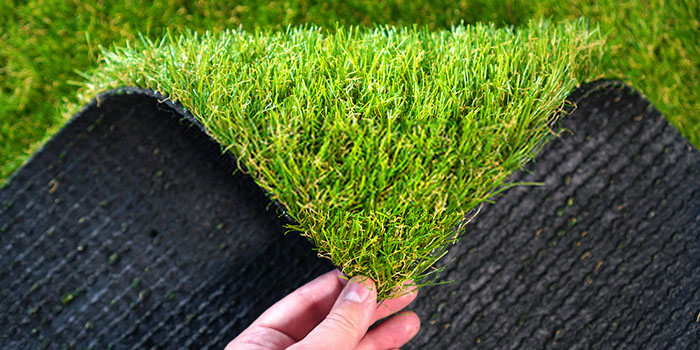
Contents
Your Artificial Grass Budget
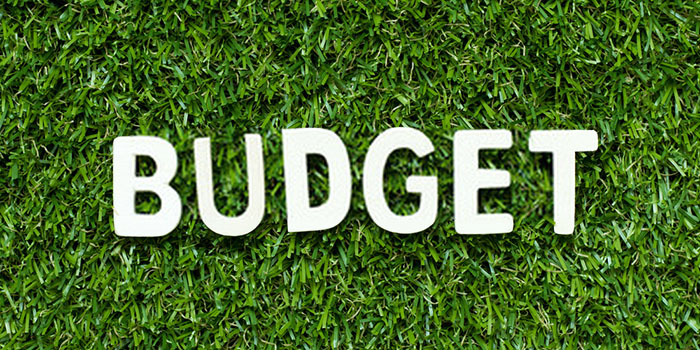
The first thing to do is consider your budget. You’ll need to estimate or measure your lawn area and multiply that by how much you want to spend per square foot.
How much artificial grass do you need?
Measuring for artificial grass is simple. You’ll need to measure the length and width of your space. Then multiply the length times the width to get the square footage of your area. If there are large spaces that won’t need synthetic turf, then you can deduct a little for these areas. However, it’s better to order a little too much than to order too little and face delays.
For example, if your lawn is 50 ft x 100 ft, then you need to buy 5,000 square feet of artificial grass at least.
Of course, different projects may be different shapes. If your area isn’t a square or rectangle, try to draw a rough picture of it. Then find some math formula to tell you the area. Another method is to draw your area, then form a box around it. Measure the box to get your square footage.
Finally, you can always speak to the retailer or installer. They can help you find the perfect size.
What is the average cost of artificial grass per square foot?
Buying a synthetic lawn is not very expensive, and the average prices are between $0.9- $3.5 per square foot. Other material costs, including weed barrier, base, and infill, add another $0.6-$1 per square foot.
These costs may vary depending on the quality of your lawn, as some synthetic grasses may cost more than others. The prices of different suppliers in different countries will also vary greatly.
Average installation costs in different countries bring the total cost to $2.8 – $18.8 per square foot. Installation costs depend heavily on the size, experience of the crew, and local labor wages. If you are experienced in DIY work, you could install artificial grass yourself.
So, if you know your area size, you can work out your budget by multiplying your square footage by the average costs above.
What Will Your Artificial Lawn be Used For?
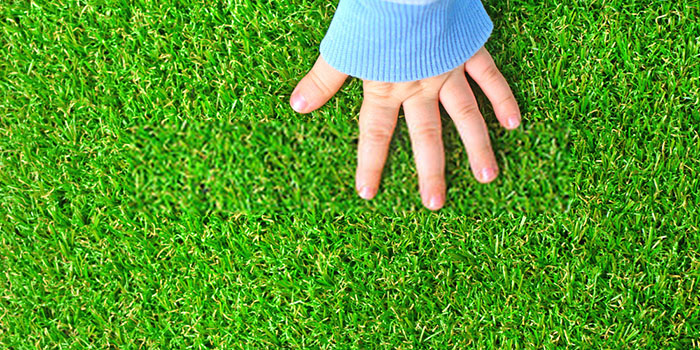
Why are you installing artificial grass? The answer will have a bearing on the type of infill you go for. You may want to use sand, which is cheaper and more suitable in areas with clay-based soil as it allows rainwater to drain through.
Alternatively, if your lawn is being used for large gatherings or sports activities like football, rubber granules might be better because they are durable and will not shift positions.
Here are some common uses for synthetic turf.
Fake Grass Around the Yard
You can install an artificial lawn for a more modern-looking yard. It is a great choice if you have allergies, wants to save water, or are tired of mowing the grass every week. Realism is the key characteristic of grass for a yard.
Pet Pad Grass Project
Pet lovers choose artificial grass because cleanup is easy. Dog owners enjoy the benefits of a pet-friendly environment that is cleaner and more attractive than concrete. For pet pads, you may want to choose grass that is super durable and easy to clean.
Synthetic Turf for a Putting green
A home golf course is a dream for many people. Artificial turf can be a cheaper and more realistic way to enjoy the game every day. You could avoid the drive to the links to get in some extra putting practice. Install artificial turf and break out your putter in your own backyard. Look for turf that mimics the aesthetics of your favorite 18th hole.
Landscaping Turf
Some people want to go all out and create a beautiful landscape using artificial turf. You can do this by choosing the perfect color and surface type. You’ll also want to consider how well it will hold up in your climate conditions. There are many benefits of using synthetic turf as a landscaping material, including reduced lawn maintenance costs and increased drought tolerance.
Sports Fields
Creating a sports field with artificial grass is a brilliant idea and will lead to lower maintenance, better durability, and more playing time in inclement weather. Choose the right turf by considering the needs of your team or league.
Characteristics
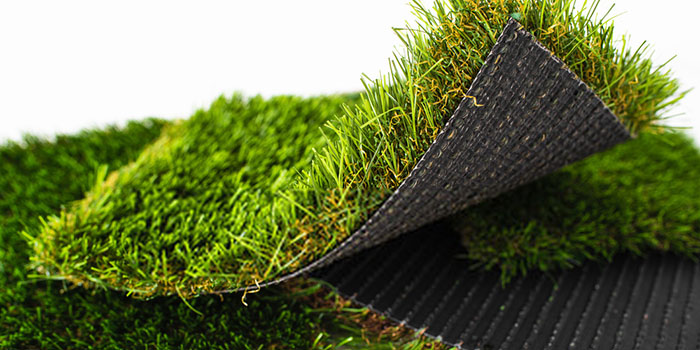
Now that you’ve got a good idea of your budget and the turf you need, we can cover some characteristics of the different grasses available on the market.
Artificial Grass Materials
There are three main types of artificial grass material:
1. Polypropylene
Polypropylene is the most widely used plastic product. It’s a good choice for those on a tight budget.
This is an affordable option for those who get little sunlight. The grass fades and loses its color quality after a time in full sun.
Artificial grass made out of polypropylene is unlike most other types because it has a shiny surface that’s not super realistic.
2. Nylon (Polyamide)
Chemstrand, the inventors of AstroTurf, began with nylon in its first product. The Houston Astrodome was one of the first major sports stadiums to install an artificial turf playing surface back in the 1960s.
One of the most highly touted benefits is its longevity.
Nylon provided a strong, long-lasting surface that was perfect for professional sports and leisure spaces alike.
Nylon is also used in a variety of products like commercial carpets and seatbelts.
The biggest downside to nylon is the cost. With the high price tag associated with this material, it isn’t an effective solution for yards that aren’t going to get a lot of use.
Nylon synthetic turf provides a durable, cost-effective solution, but maybe too rough for those looking for an “organic” or softer alternative.
3. Polyethylene
Within the commercial world, polyethylene is a common choice for plastic manufacturing and made its way to artificial grass. It’s more affordable than nylon and looks better than polypropylene products.
Polyethylene offers homeowners a good balance between ease of maintenance, sustainability, and thickness. The less dense the fibers are in this carpeting type, the more it will wear over time.
Artificial grass features a rougher texture than traditional grass, so consider that before buying.
Polyethylene is the best option for most artificial lawns, including your backyard.
Pile Height
Think about how high you want your grass to be. Do you want super short, putting green grass or longer, softer blades for kids to play? Try to imagine your lawn in different seasons and choose a pile height to work with your needs.
Pile Density
Density speaks to how thick the grass is and how many piles go in each square foot. Super dense turf might feel too prickly for you, but it may last longer.
Pile Height and Density Work Together. Your pile height should be comparable to your density choice so that the blades of grass are uniform in their appearance.
Colour Choice
There are dozens of different colors of artificial grass. The majority of people choose green, but there are also reds and brown options to be unique and still have a beautiful lawn.
Realism is an important factor to consider. There are even faux-grass options that look identical to natural grass, but they don’t have the upkeep or environmental impact of a traditional lawn.
How to Choose the Best Quality Artificial Grass?
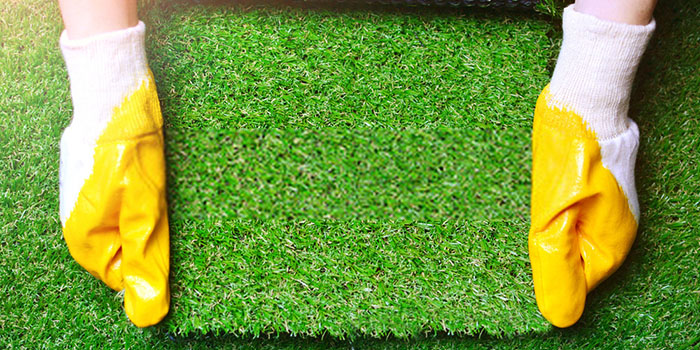
Let’s get the biggest step out of the way first:
Don’t choose artificial grass by looking at pictures. Order a sample or visit an installation.
You should feel comfortable with the look and feel of your artificial turf before you buy it. The only way to do this is to hold the turf or walk on it.
With that out of the way, there are a few more things to consider.
Is the Grass Durable Enough for Your Project?
Will your synthetic grass stand up to the use you intend? Try to read the manufacturer’s guides to understand how your turf will hold up to the traffic in your space.
Is the Artificial Turf Going to Feel Resilient and Springy?
Unless you’re just designing for a show, you want grass that feels good. So get a sample of the turf you’re considering and see how it feels.
It should feel resilient, springy, or soft to the touch. It shouldn’t have a plastic-like texture that you can’t sink your fingers into – this is an indicator of poor quality turf with low durability.
Does the Artificial Turf Feature Realistic Colors with Variety?
Your chosen artificial turf should look a natural color and have some variety. If it’s all one color, it won’t fool the eye and will look unrealistic.
Also, take into consideration how well your chosen artificial grass blends in with the surroundings if you’re looking for a complete makeover of an outdoor space that’s been neglected or looks dated.
The most realistic-looking turfs are those with brown, green, and some blue hues.
How Good is the Backing?
Beneath the grass should be a layer of weed barrier fabric and a ‘road base.’ These are the foundations for a lawn installation that will withstand high traffic, heavy rain and equipment.
If the backing is not up to scratch, it cannot resist moisture or footfall. It will degrade much sooner than expected and end up costing more to replace.
The only way you’ll know if the back of your artificial grass has been made with quality materials is to investigate the details from the manufacturer. Homeowners can also ask the company they are using for the installation process for their feedback from other turf installation projects.
Factory Tests
Fake Grass is an amazing product. There are, however, government regulations and industry tests that can help you spot the cheap turf you should never buy.
Look for proof of fire retardant materials, no hazardous materials in construction, and a warranty that backs up the products.
Where Should I Buy Artificial Turf for My Project?

There are two main options:
- Buy from a local supplier. You should be able to inspect the turf and even visit previous installations.
- Order online from a reputable company. You should be able to inspect the product as a sample. Try to ensure the warranty will cover your project and any other unexpected problems.
Buying locally is a brilliant choice, but many people will not find a reputable artificial turf installer near them. In this case, homeowners can look online for the right product for their turf installation.
Research the Artificial Grass Company
Find an email address and start a dialog with the artificial turf company. Ask about their delivery fees, samples, infill materials, and other fake grass products, such as bender board for installation, seaming tape, and base materials to lay under the synthetic lawn.
Runaway from companies whose customer care or communication isn’t right from the beginning. They may let you down in the middle of your lawn installation project.
Check Artificial Grass Quality
Order a turf sample and use it to gauge how much you’re going to like the synthetic lawn once it’s installed. Don’t just look at it, either. Walk on it, jump on it, run in place, stretch it, or abuse it. Give it a bit of stress to see how it holds up.
How Much Should Your Artificial Turf Cost?
As we said, the cost of artificial turf is between $0.9 and $3.75 per square foot. Other materials may push your price up to between $1.5 – $4.5 per square foot.
Ease of Communication
In the age of the internet, there is no excuse for poor customer service. You should expect your supplier to be available for communication by phone and email.
Service Standards
Look for reviews of your desired product. Lawn care companies, installers, or other homeowners may be excellent resources for you to investigate the service standards of your supplier. Cost savings feel nice, but customer service is more important. Find a supplier who values your business and wants to do all they can to help you get the best turf possible.
Conclusion
If you’re looking for that perfect grassy backyard, Relyir Artificial Grass is the way to go. It not only looks incredible but feels good. Relyir includes a special backing on every roll to make the synthetic lawn super durable. Relyir is one of China’s top manufacturers, so your price is always “factory direct.” With great freight prices and a factory discount, you could get top quality artificial grass at a brilliant price.
FAQ
How to make a budget?
- The amount of lawn you need
- The average cost of artificial grass per square foot
- Lawn Installation Cost
What Will the Artificial Lawn be Used For?
- Fake Grass Around the Yard
- Pet Pad Grass Project
- Synthetic Turf for a Putting green
- Landscaping Turf
- Sports Fields
How to Choose the Best Quality Artificial Grass?
- Is the Grass Durable Enough for Your Project?
- Is the Artificial Turf Going to Feel Resilient and Springy?
- Does the Artificial Turf Feature Realistic Colors with Variety?
- How Good is the Backing?
- Factory Tests
Which Supplier Should I Buy Artificial Turf for My Project from?
- Company with a good reputation
- Artificial Grass of high Quality
- Artificial Turf at affordable price
- Ease of Communication
- High Service Standards
